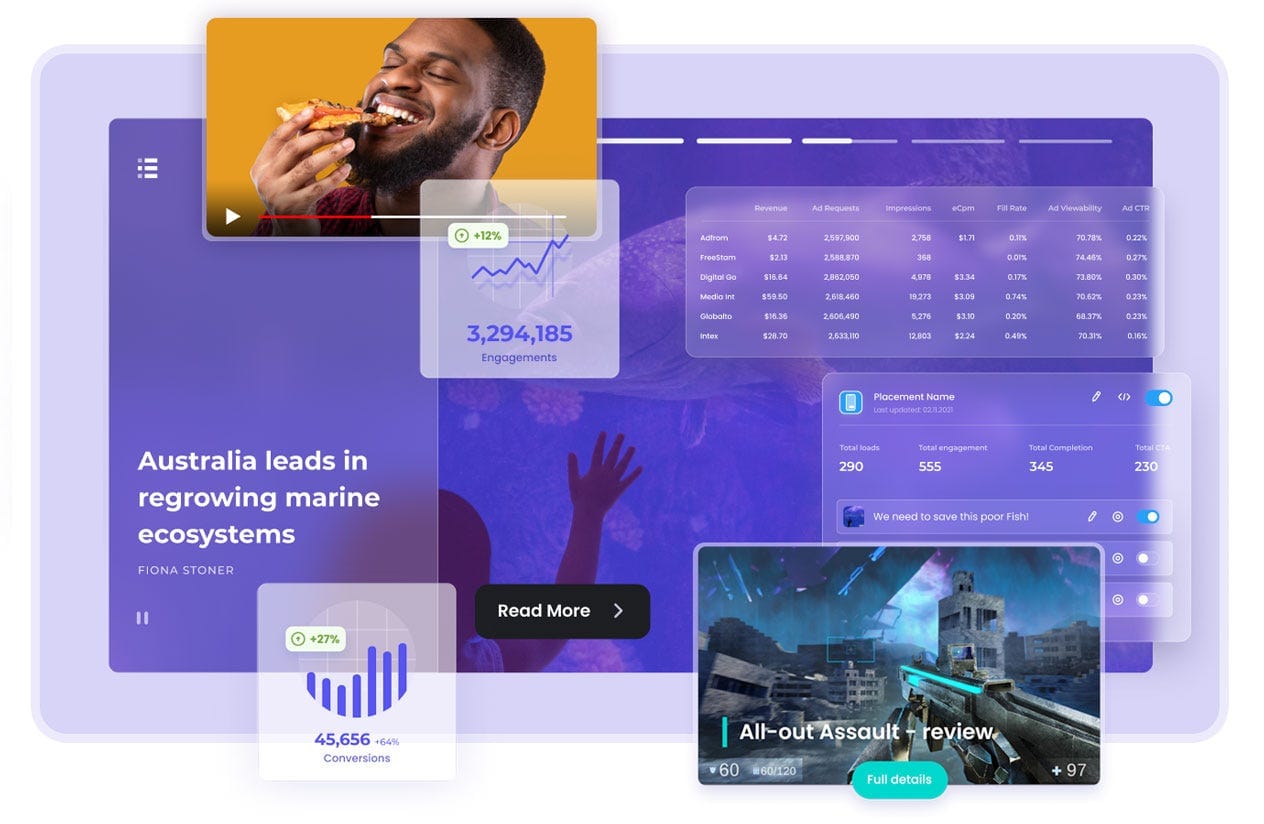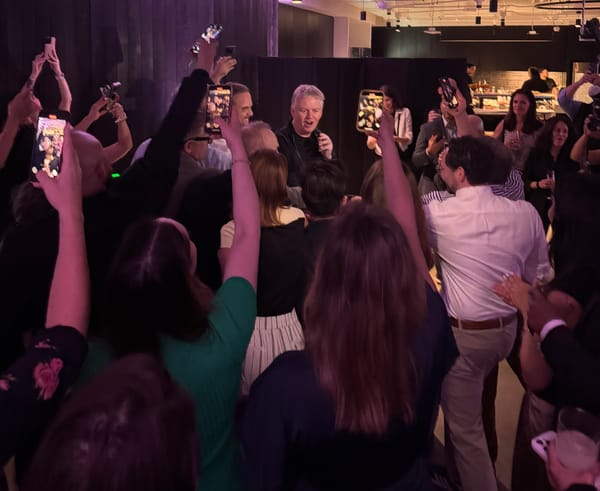The publisher/agency model
Team Whistle's Joe Caporoso on the evolved MCN

We are kicking off our second research project, delving into the state of publisher subscriptions. Our goal is to find out the health and sustainability of publisher efforts to create direct revenue business lines, and how they’re tying those efforts into their advertising businesses that are often still far larger. Take the five-minute survey. We’ll publish the results as part of a research report next month. Thanks to BlueConic for sponsoring this project.
This week on The Rebooting Show, I spoke to Team Whistle president Joe Caporoso to dig into their publisher-meets-agency model and the fast-changing sports media landscape. First, a message from The Rebooting supporter Ex.co.


Digital publishers have been looking for ways to consolidate their video solutions without compromising high revenue or a positive user experience.
Ex.co is an online video platform, empowering publishers to own their video strategy for maximum yield by offering a machine-learning-based yield engine that focuses on revenue growth. Ex.co’s platform includes everything a digital publisher needs to execute a successful video strategy on 100% of their digital pages–without any license fees or upfront costs.
Ex.co’s AI-based solutions for video management, video monetization, content automation, and video recommendation are trusted by some of the largest publishers globally including The Arena Group, CBSi, Hearst, Nasdaq, New York Post and others.

The best way to make money in media remains several ways, but one of the biggest changes is how many publishers have by necessity diversified their revenue portfolios. The shift to subscriptions is well known, but that’s news. For most categories, subscriptions are DOA. Instead, the shift I’m seeing is an embrace of a services model, usually as a reaction to the difficulties of relying on fickle ad revenue, particularly when it’s tied to platforms.
Founded a decade ago, Team Whistle is a survivor. It sprang to life as a wave of multichannel networks that filled the need of aggregating YouTube properties to make buying easier. The biggest problem of the MCN model is that it takes a difficult business model (advertising) and makes it even more difficult because you’re taking a cut of a cut, after YouTube gets its taste. Most MCNs fizzled.
Whistle shifted its focus to building its own properties, producing franchises like “No Days Off,” a series following incredibly focused child athletes. It still reps other properties, like Dude Perfect. It complemented that with an agency business that relies on the distribution and cachet of the original programming. Whistle is part publisher, part agency.
“What we found is that we needed to make our own content as well and run our own channels to stand on our own,” Team Whistle president Joe Caporoso told me on this week’s episode of The Rebooting Show. “And that that's what I believe has helped make us be sustainable and still be here through what's been just a crazy four or five years.”
Some highlights from our conversation:
The MCN flaw was often poor curation: “There was a mix of quality MCNs versus quantity MCNs. And you could be both at the same time, but there were companies out there that had tens of thousands of channels in their network.”
Positivity as a differentiator: “We're very strict in keeping to our lane, which has to be brand safe. We always hit on the positive and relatable because we're not trying to do the same things that a Complex or a Barstool or an Overtime are doing. We're not covering real time news, sports and analysis. We're trying to tell stories that make you feel like you could see yourself in [the athletes] and you see parts of their life that remind them of you.”
Affordable quality: “Cost effectiveness matters. We are not trying to win Emmys and Oscars with the videos that we're producing on YouTube. There is a skill set to produce this content in a quick-turn, adaptable, cost-effective way. That is how we separate ourselves and win. You have to be able to find the right content people who are game to do that. That takes time and shuffling around over the course of our years, because some people want to make those bigger, more costly productions. I love them, too. But that's not our business.”
Platform ad revenue is a nice to have: “If the CPMs are bad or the algorithm changes, there's only so much we can control there. We do monetize programmatically. We take that split with the platform. The real drive is branded content and how we integrate brands to build campaigns that slip into our programming calendar without making it feel too inauthentic. That's what drives the majority of our revenue and our margin.”
Avoiding the “agency trap”: “If you don't go into it with the right personnel on the right plan, it becomes a very low-margin business that is very time intensive. That's been a learning for us. There's been times we've gotten over leveraged with some of those accounts, and it starts taking away from your core business.”
Listen to the full episode on Apple, Spotify or wherever you get your podcasts.

Come to the Self-Serve Summit on Oct 18
Advertising Week approaches. I miss the crazy early days when they would parade Tony the Tiger and the Jolly Green Giant through Times Square, like the conquering heroes they are.
I’ll be giving a keynote talk at the Self-Serve Summit 2023 powered by DanAds. The theme of the talk is the more-with-less era, and how publishers will need to reorient their strategies in a post-ZIRP era. The Self-Serve Summit is on Wednesday, Oct. 18, from 9am to 6pm, at Glasshouse Chelsea. If my talk is not enough, investment banker/comedian Terry Kawaja is doing a keynote, and there will be panels covering OTT, retail media, AI and more.
Thanks for reading. Send me a note with your feedback by hitting reply or sending me an email at bmorrissey@therebooting.com.




